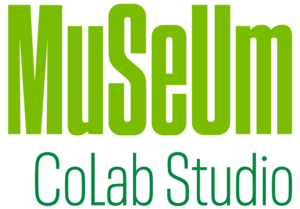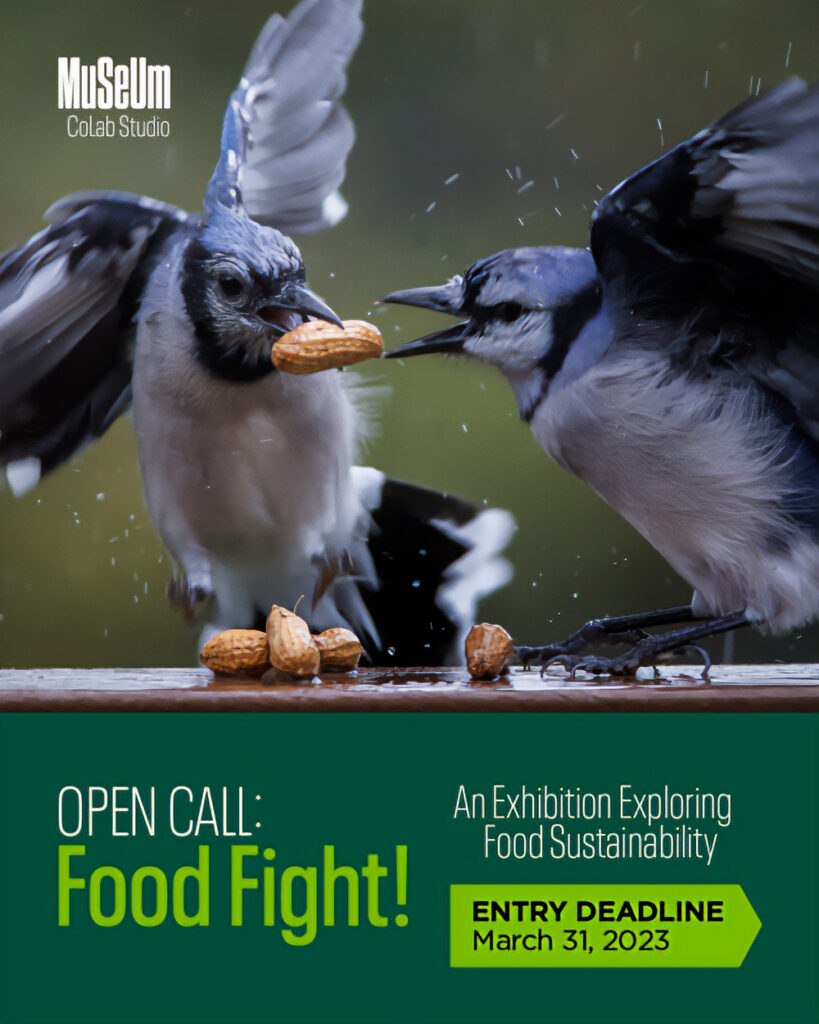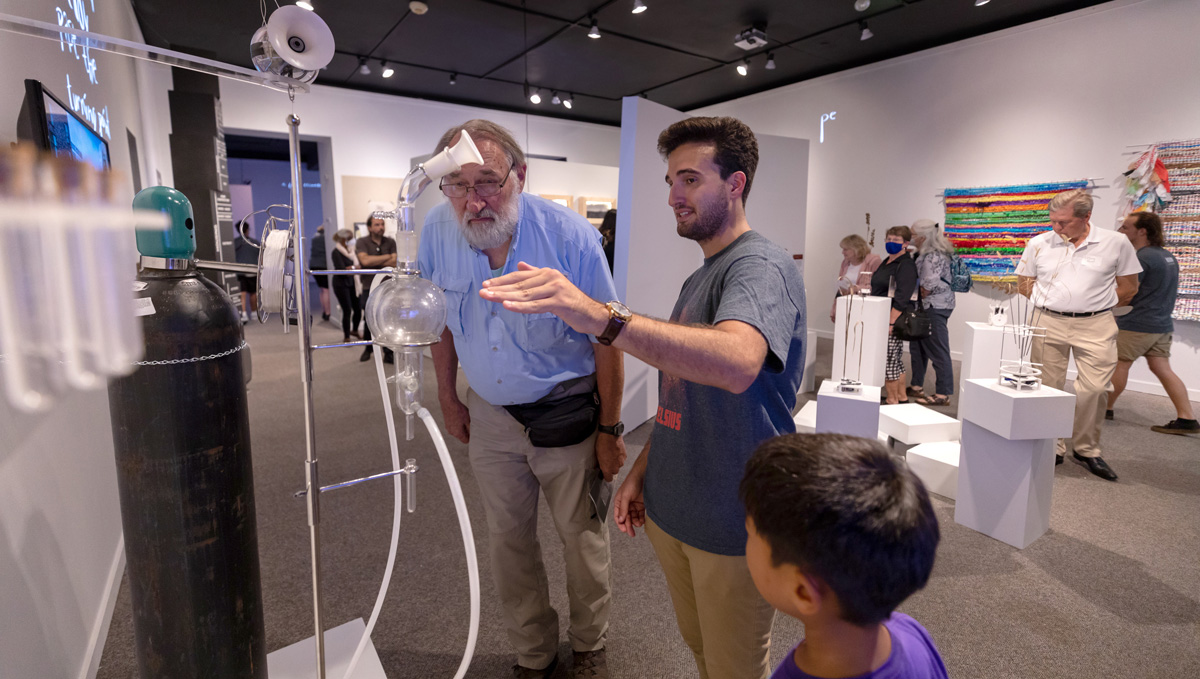CoLab Open Call
Leveraging open calls for interdisciplinary exhibitions
BACKGROUND
 The MSU Museum CoLab Studio utilizes an open call process to develop our exhibitions and significant aspects of our programming series. Our exhibition themes primarily focus on complex, global challenges, such as climate change or surveillance, and we aim for the topic to be addressed in a way that is experimental, creative, and immersive for our audiences. These exhibitions take an interdisciplinary approach to the subject matter, with individual exhibits ranging from photo and video installations to data visualizations and interactive applications. A number of exhibits and public programming ideas are selected through the open call process. Anyone — students, community members, artists, scientists, researchers — is welcome to submit an idea to the open call, and submissions can be either for completed or in-progress works. The exhibitors selected from the open call receive a financial stipend toward the costs of their work.
The MSU Museum CoLab Studio utilizes an open call process to develop our exhibitions and significant aspects of our programming series. Our exhibition themes primarily focus on complex, global challenges, such as climate change or surveillance, and we aim for the topic to be addressed in a way that is experimental, creative, and immersive for our audiences. These exhibitions take an interdisciplinary approach to the subject matter, with individual exhibits ranging from photo and video installations to data visualizations and interactive applications. A number of exhibits and public programming ideas are selected through the open call process. Anyone — students, community members, artists, scientists, researchers — is welcome to submit an idea to the open call, and submissions can be either for completed or in-progress works. The exhibitors selected from the open call receive a financial stipend toward the costs of their work.
 Rather than being reviewed by CoLab Studio staff alone, open call selections are made through a collaborative curatorial team that consists of CoLab Studio staff, students that are interested in museum studies or work within the exhibition space, and subject matter experts whose knowledge, skills, and experiences relate to the exhibition theme. Additionally, support is provided from the CoLab Studio team and the exhibition fabrication firm to help selected exhibitors continue to iterate and refine their ideas to create the most compelling visitor engagement and experience. It isn’t uncommon for CoLab Studio staff to be working with scientists or artists who are presenting work in an installation-based format for the first time, and our team helps to provide recommendations and scaffolds for ways exhibitors can enhance their work to best convey its intended message.
Rather than being reviewed by CoLab Studio staff alone, open call selections are made through a collaborative curatorial team that consists of CoLab Studio staff, students that are interested in museum studies or work within the exhibition space, and subject matter experts whose knowledge, skills, and experiences relate to the exhibition theme. Additionally, support is provided from the CoLab Studio team and the exhibition fabrication firm to help selected exhibitors continue to iterate and refine their ideas to create the most compelling visitor engagement and experience. It isn’t uncommon for CoLab Studio staff to be working with scientists or artists who are presenting work in an installation-based format for the first time, and our team helps to provide recommendations and scaffolds for ways exhibitors can enhance their work to best convey its intended message.
WHAT WE LEARNED
An open call submission process can be a valuable tool for museums seeking to co-create exhibitions that explore complex, global challenges, as it allows for a wider range of perspectives, experiences, and ideas to be included and creates opportunities for visitors to engage in a subject from a variety of angles. Some of the lessons we have gathered from our years working with an open call framework include:
- The open call submission process fosters innovation, conversation, and creativity within the exhibition. By inviting submissions from a wide range of disciplines and backgrounds, the curatorial team can encourage contributors to think outside the box and to push the boundaries of traditional museum exhibitions. This often leads to the creation of exhibits that are more dynamic, interactive, and engaging for visitors.
- It takes time for invited curatorial team members to feel comfortable and confident in reviewing submissions. Non-staff members on the curatorial team sometimes express uncertainty around knowing what would be best in a museum exhibition. It can take time for them to feel more comfortable expressing their opinions on a given proposal and recognize that their perspective is important to the process even if they do not have previous experience working in a museum. We try to emphasize that their understanding and experiences as someone who might visit these kinds of spaces is just as valuable as their feedback connected to the subject matter.
- Narrative connections within open call exhibitions can seem unclear to visitors until you make it visible. Although we draft and revise learning objectives for the exhibition to guide our planning work, the content of the exhibition is ultimately driven by what comes through the open call. As such, the pieces that are included in the exhibition, while held together by the overall theme, can sometimes feel disconnected due to their variety and different disciplinary approaches. To help create a cohesive narrative, we add additional wall text and try to create a visual sense of cohesion and connection with exhibition design elements. For example, in our exhibition, Tracked & Traced, we added visual circuit traces connecting exhibits with similar subthemes, and added additional wall text to help visitors build connections throughout the exhibition.
- Robust engagement with exhibitors toward finalizing the concept leads to stronger outcomes and higher community engagement: The MSU Museum’s primary audience focuses on our university students, faculty, and staff, and our goals are to continue to expand the volume of open call submissions from our community over time. We have found that discussing the process of creating an exhibition proposal (and working with exhibitors to revise ideas and increase interactivity) creates compelling learning experiences and increases the likelihood a new participant will submit an idea. This adds a teaching and learning component with our exhibitors that helps them expand their ideas and engage with new ways of presenting research and ideas.
